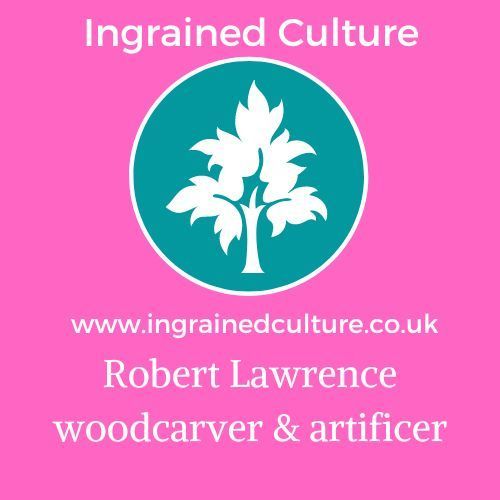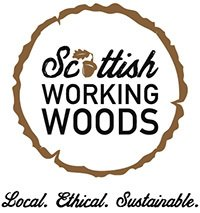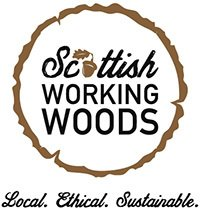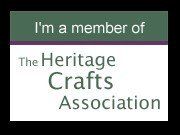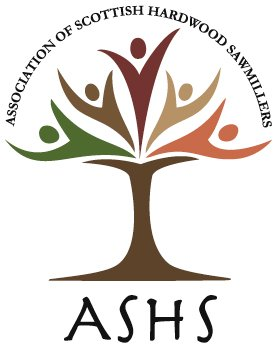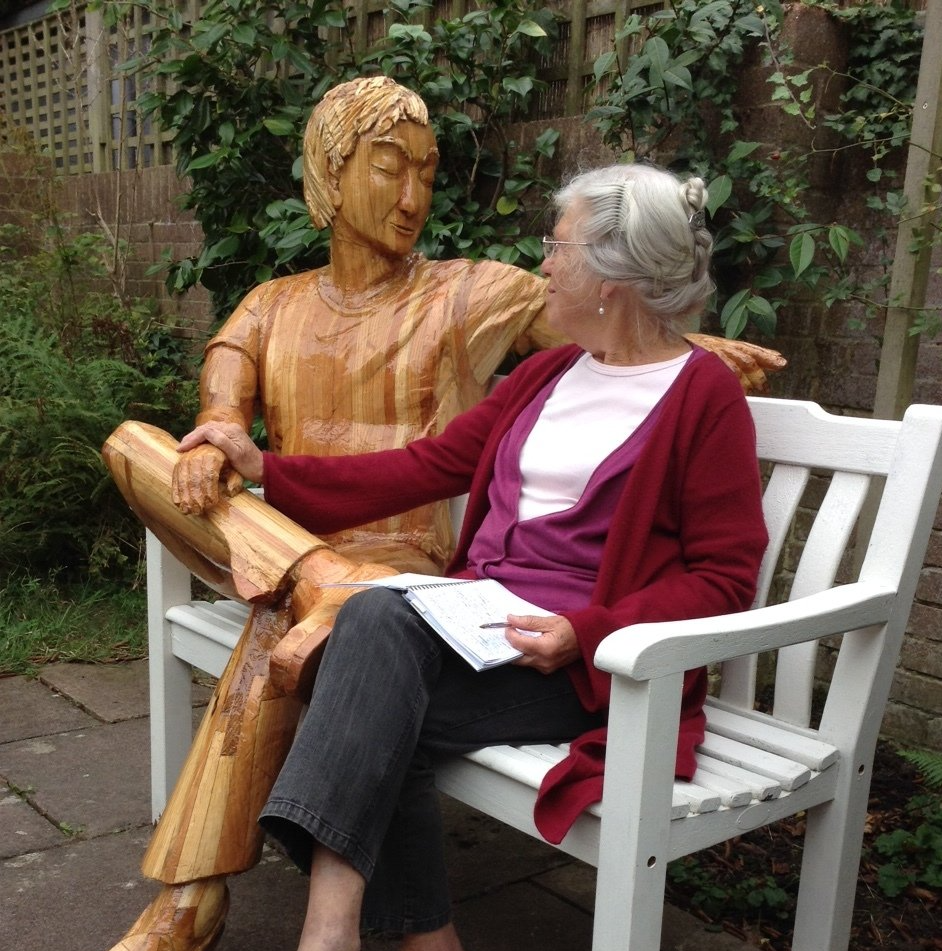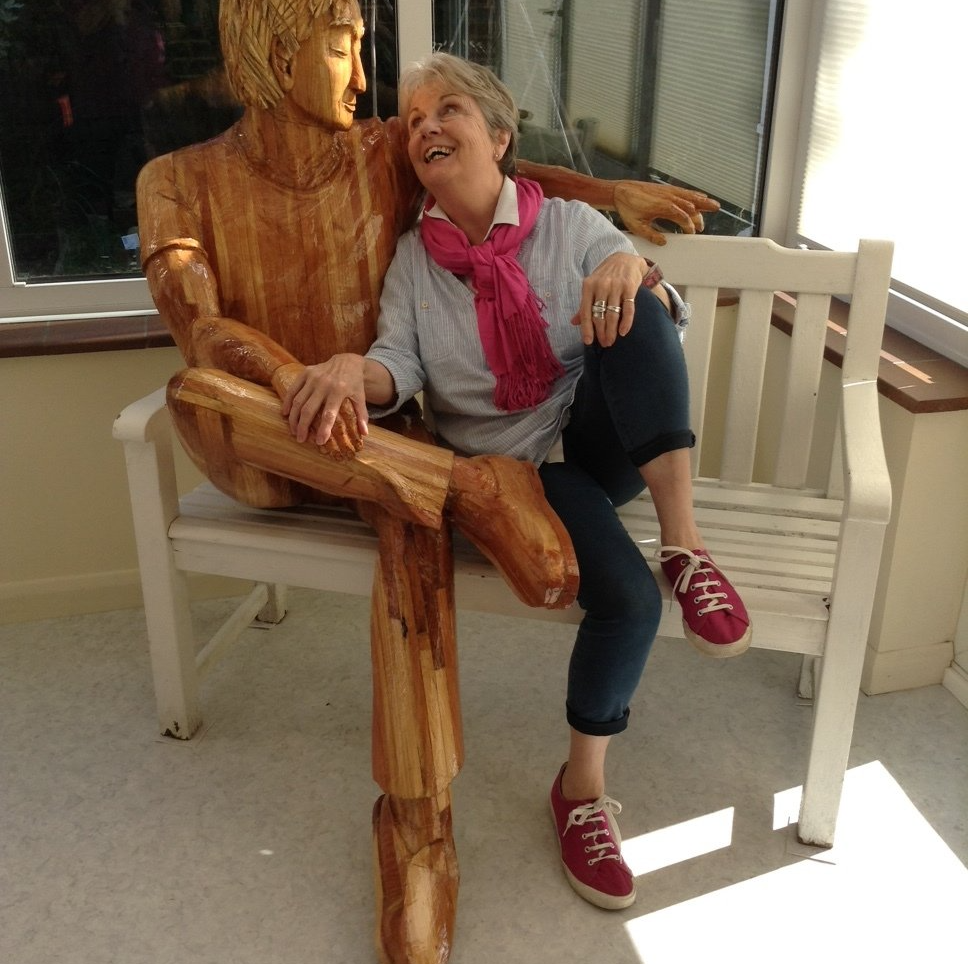
Free exciting design process | Highly personal service | 100% legal & sustainable Grown in Britain wood
Considering a Public Art sculpture?
Advice from a
maker of Public Art sculpture, based in Scotland, covering the UK.
Sculpture by Robert
A guide and helpful pointers when considering sculpture for the Public Realm.
If it's easier, there is a brief video guide to the making of Public Art by Robert at the bottom of the page.
It doesn't matter how early in the process you are, if you have a project, why not discuss it - free of charge - with Robert.
Fast track to Robert
We will get back to you as soon as possible.
Please try again later.
What is the purpose of Public Art?
There are a variety of answers to this question, a few are as follows:
Public art can be used for interaction - to sit, talk and take photos. Also for use as memorials.
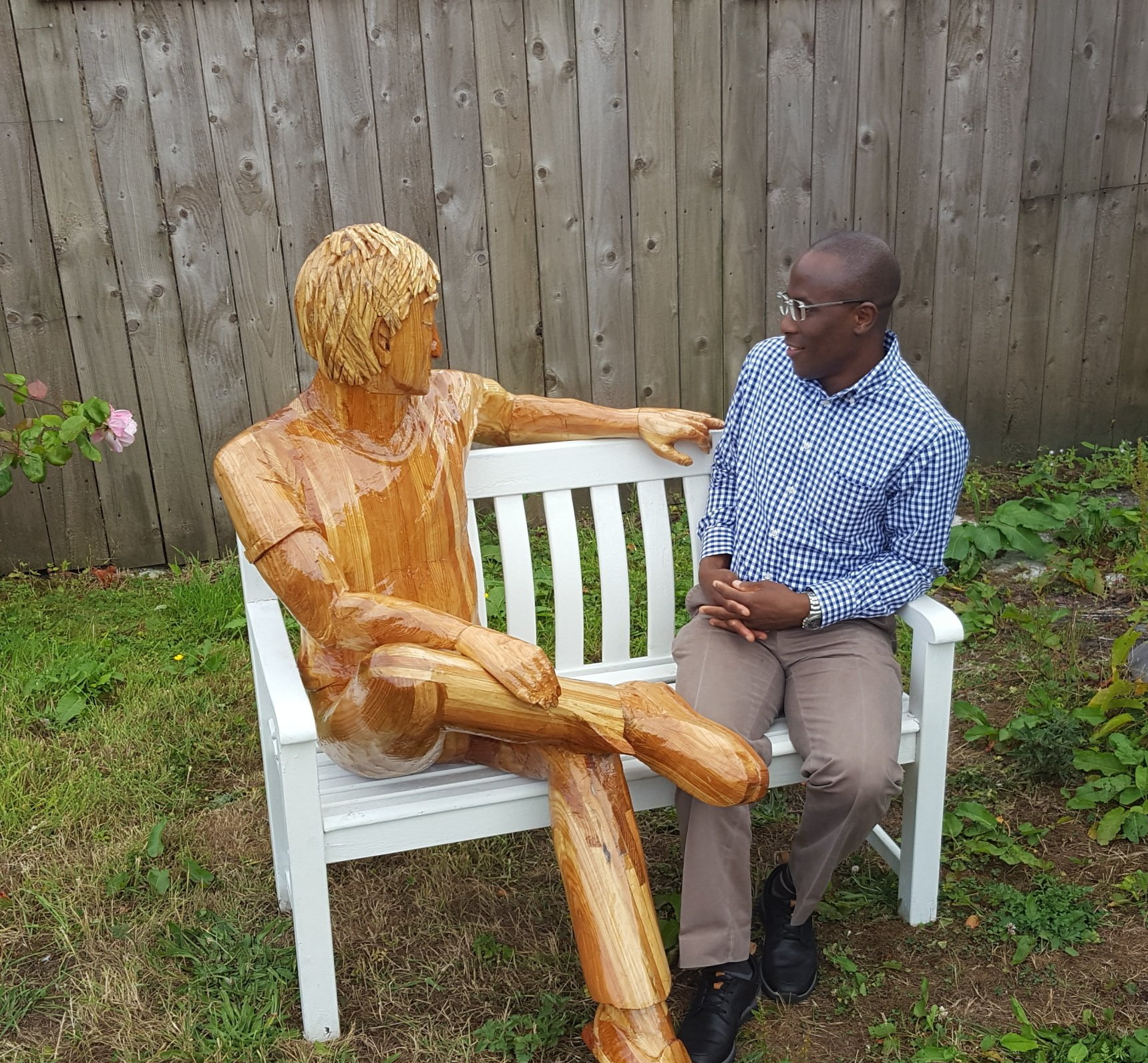
Realistic figurative sculpture. It's hard to imagine any form of sculpture that can create more emotion than figures – particularly those that reflect real life. We naturally react to the familiar, and to my mind, the success of public art is often measured by the public themselves on how easily they recognise the passive message of the piece, whether that may be love, vulnerability or compassion etc.
You can use art in the public realm to encourage conversation between generations.
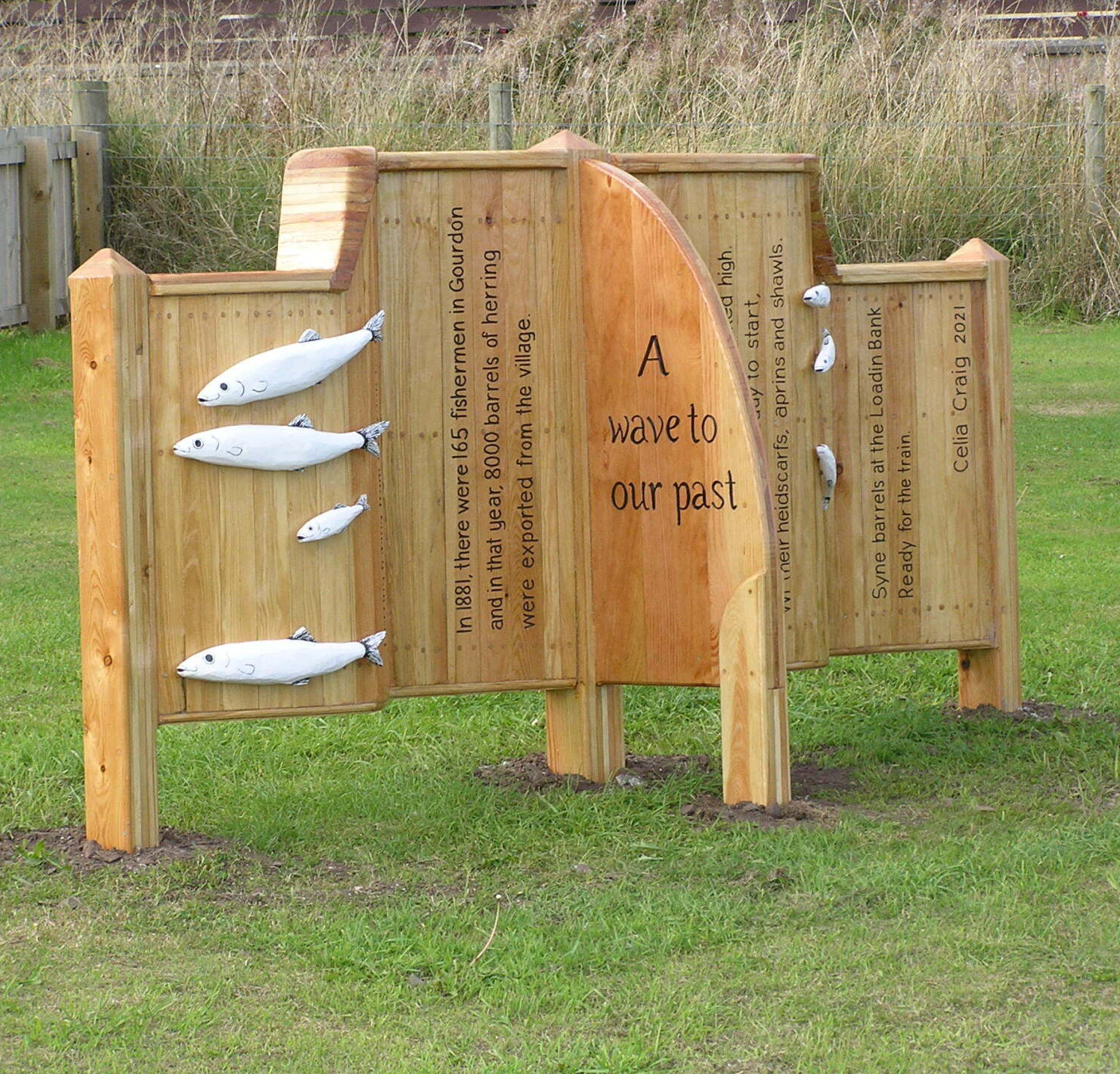
Contemporary shapes and philosophy, focusing on local human heritage through the use of extensive carved text.
Keep right up to date with the use of 100% legal and sustainable British grown wood.
COVID-19 Community memorial.
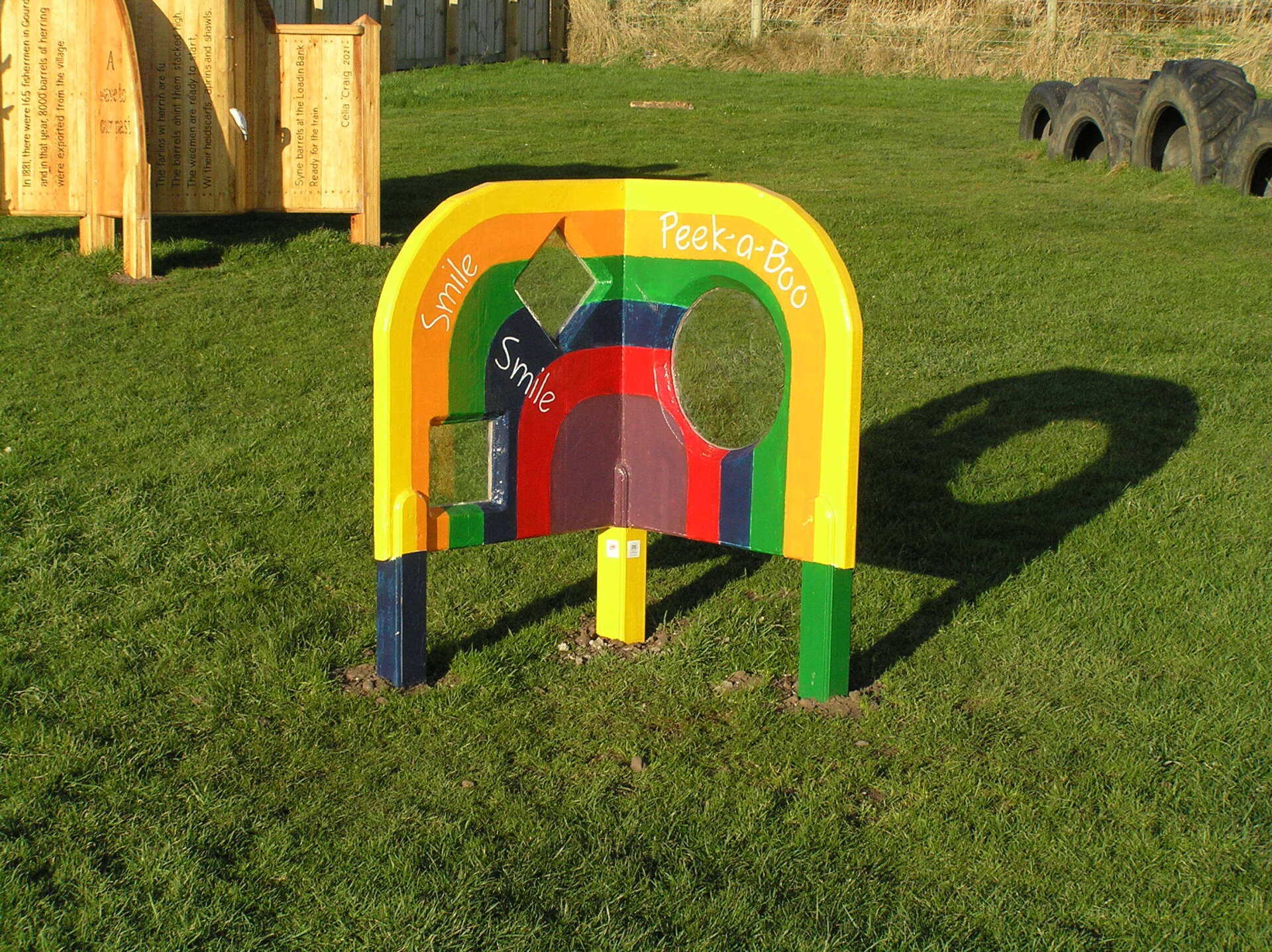
This is a benign COVID memorial, a gentle reminder to older generations through the use of the iconic rainbow. An intentionally light touch memorial. To the under 5's, a colourful and fun activity piece, as they look through either the round, diamond or square windows. I do advocate that at least consideration is given to designing memorials to have suitable dual purposes, a more contemporary approach perhaps.
Use pure art, to challenge the public mind and encourage deep thought.

'Covid Clouds' is an art installation that I made during lockdown 1. It consists of 12 clouds, each with a carved statement or question. When installed the piece extends over a length of about 200m and was free for the public to enjoy. It went on to tour Scotland on loan to Community Councils. During 2021, Covid Clouds was taken into the public collection by Aberdeen City Council.
Easily understood, and designed to trip your emotions.
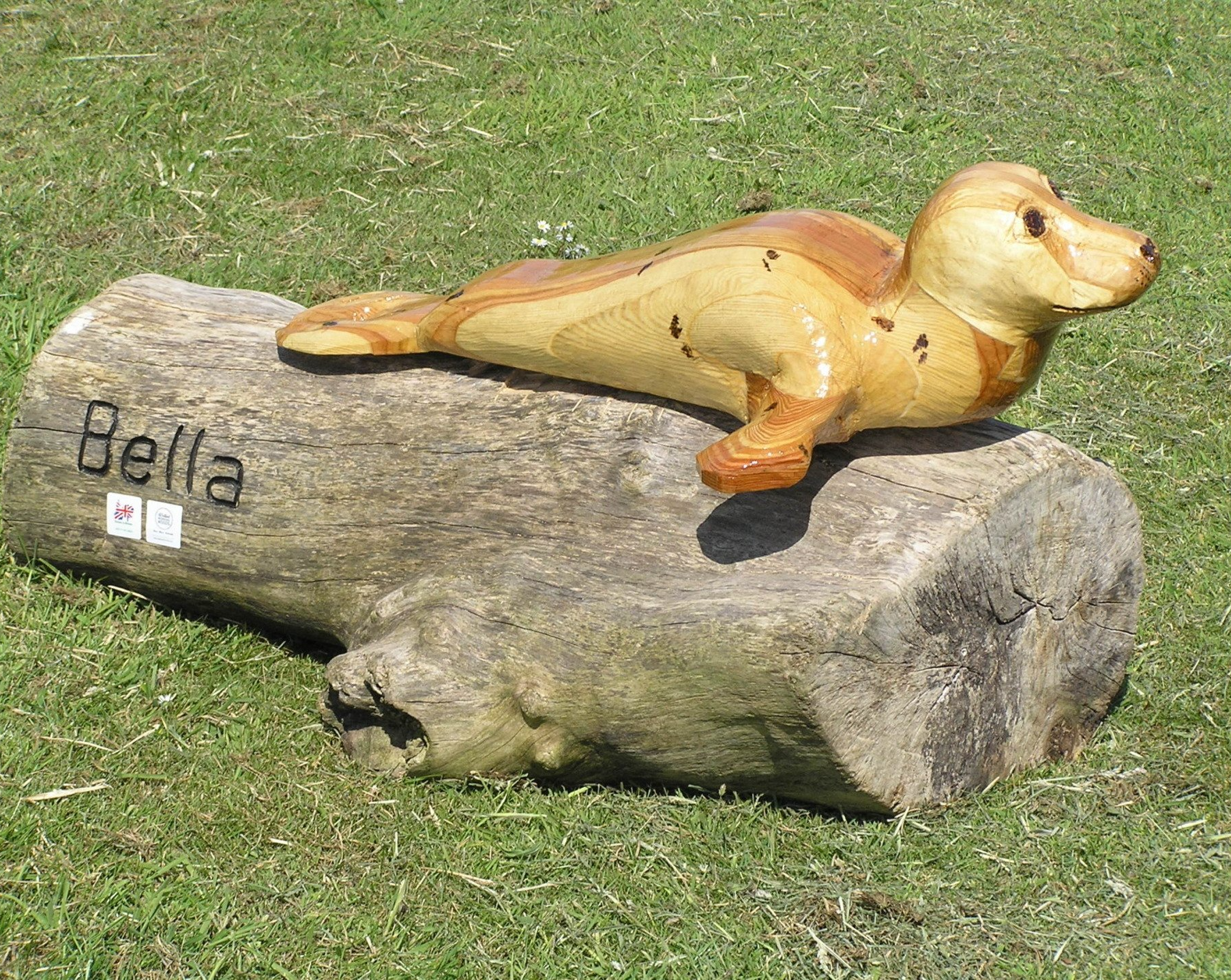
Realistic Nature Sculpture. If you want to please as many people, from all generations as possible, it's hard to beat natural realism.
What to consider, when commissioning Public Art.
The phrase 'Public Art' covers a broad variety of the arts from one off performances, short runs of music, right through to permanent sculpture and public memorials.
There's a lot of conflicting advice about how best to deliver Public Art. I don't want to add to the problem, so it's important to point out I'm speaking here from my own experience and opinion as a maker and supplier of sculpture - a public art artist, if you like.
In my experience, ordinary people (and that includes me), the general public, react most favourably to realism. I'm aware this statement may be controversial, but I look at this subject from a practical view point only. If you're looking to please large numbers of people I would recommend sticking to an instantly recognisable and understandable subject. The more realistic it looks I would say, the more people will give it a thumbs up. If you want to be a little more adventurous, then I would recommend a modern abstract shape that contains lots of carved text that is profound and easily understood, thus catering for a wide variety of tastes.
My work is very much NOW in terms of Eco relevance and credibility, and I use traditional craft methods and hand and eye alone to achieve absolute realism. It's all about Climate Crisis mitigation and so I do not use high tensile materials, I use natural wood and therefore my sculpture is human scale. I can not make colossal sculpture.
Client Collaboration & Public involvement.
This is one of the fundamentals. You need to decide how much you wish to involve the public, if you're seeking public funding, public involvement is likely to be a prerequisite. There are various ways to do this, either you can appoint a 'lead artist' who deals with all the public involvement, collates the opinions and formulates a report identifying trends and popular requests. The lead artist would then act as a project manager and instruct me. I am not a lead artist, I am a craftsman who makes the sculpture. Alternatively, and a cheaper method, is to appoint a person within the client group as a project manager to collate the public's contributions and I would take instructions from the client project manager. For my part I have no objection either way.
How much of the design process, can you expect from me? As much or as little as you desire. For example, the piece 'A Wave To Our Past' is full of text focusing on the people of Gourdon and the social history of the village. There is a poem from a local poet and all the other text was provided to me by one member of the community group that I was instructed by, acting as project manager. I was responsible for the wave shape, sculpture design and the layout of text.
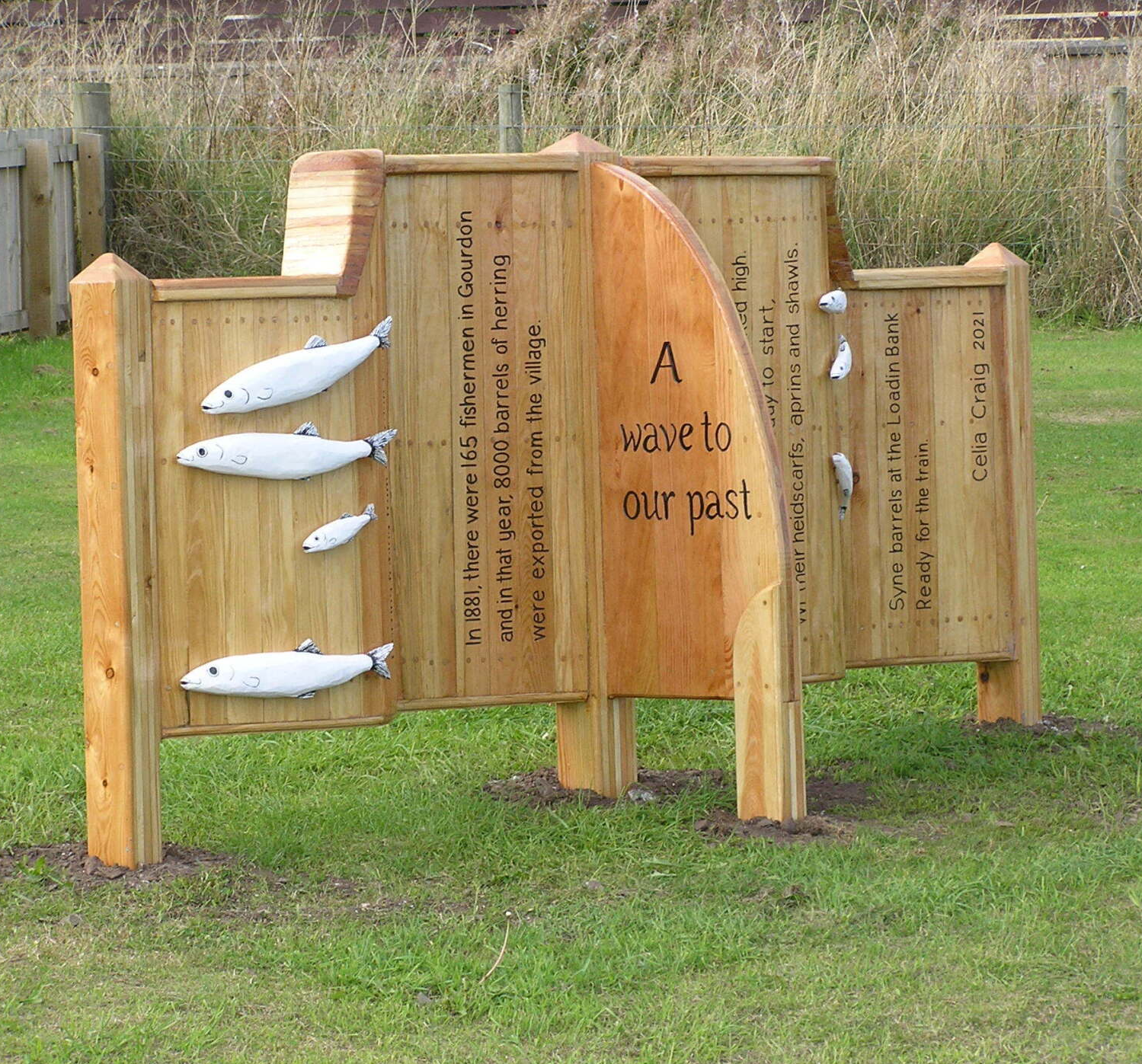
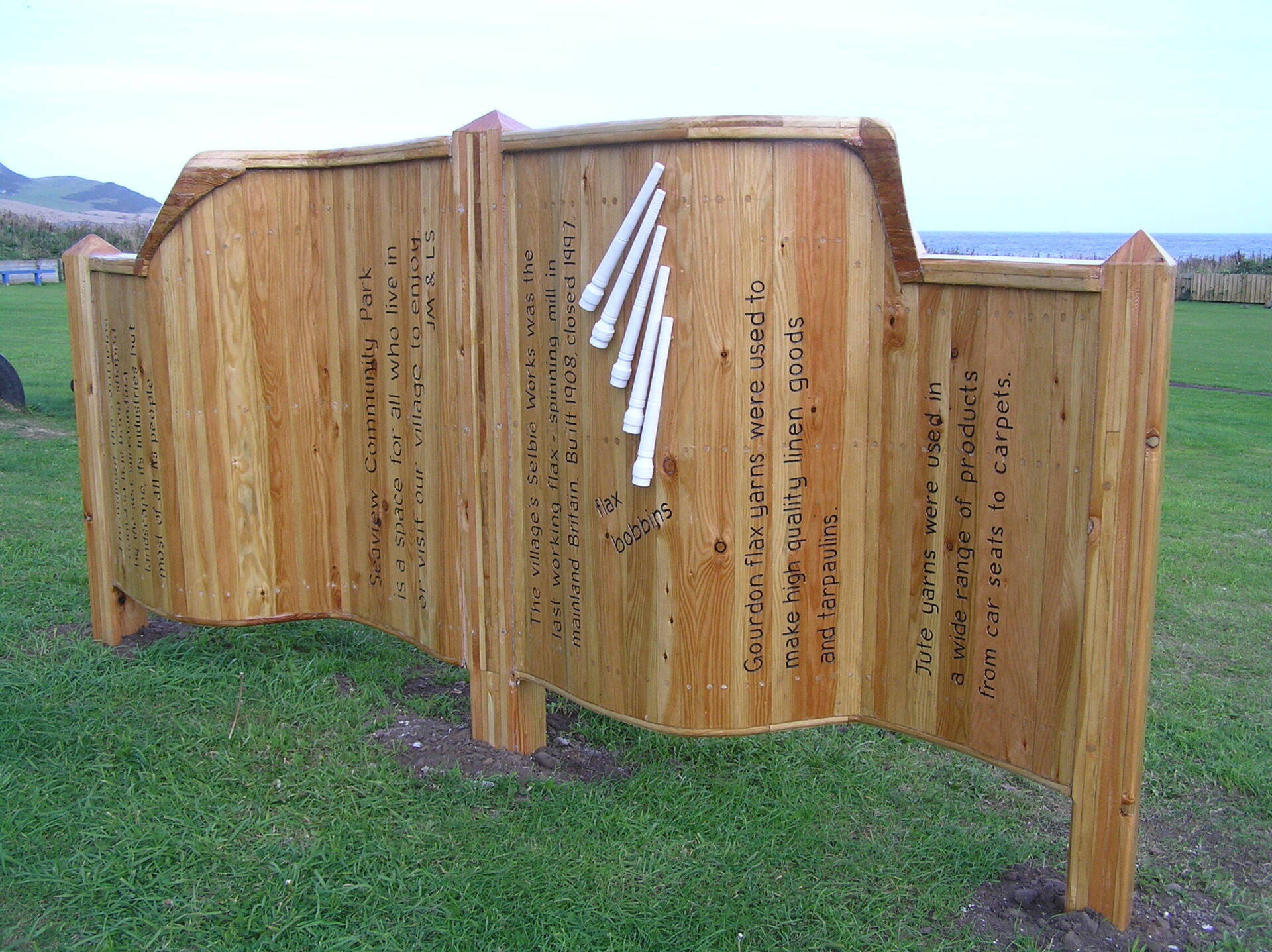
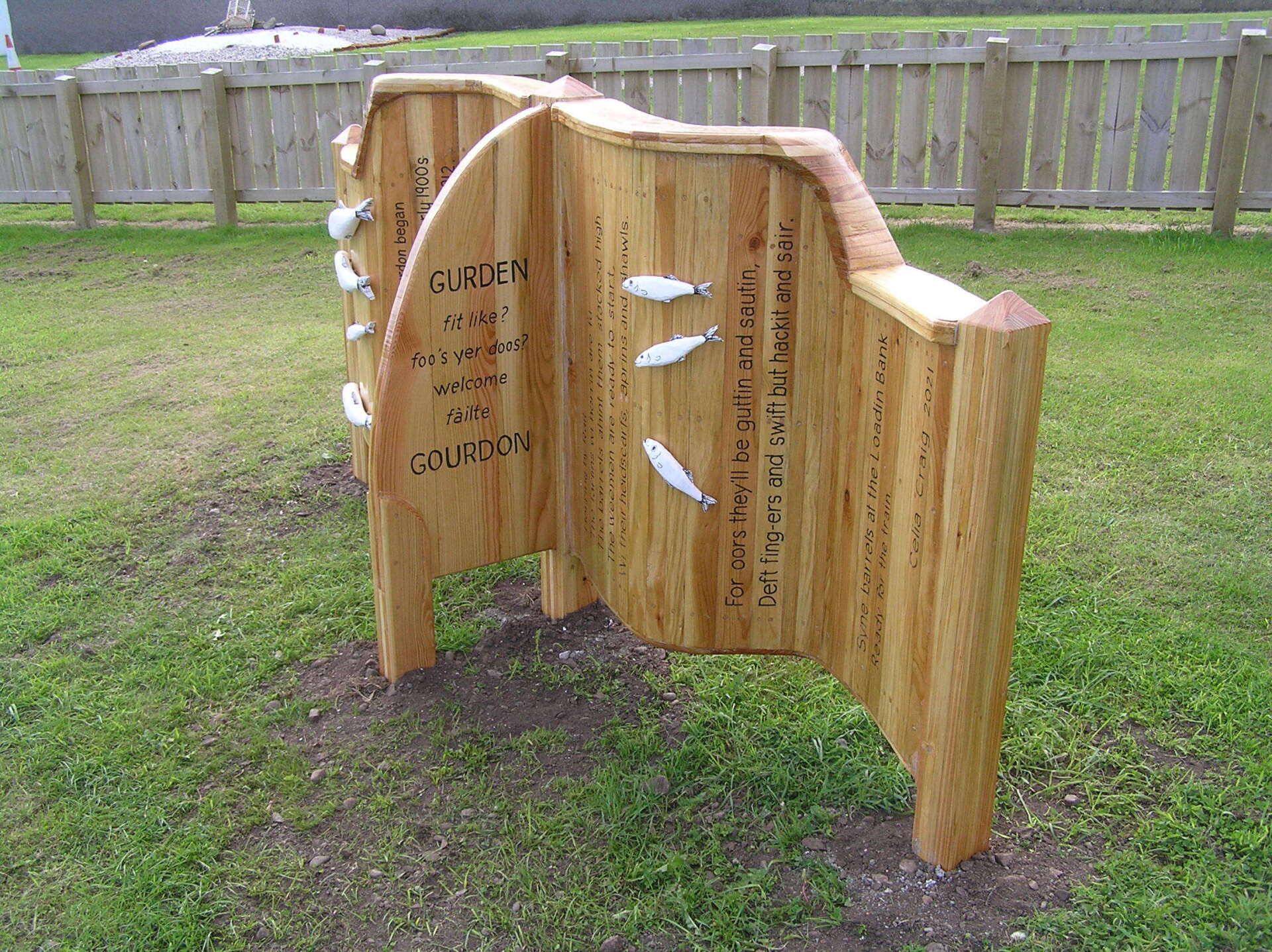
The other fundamentals:
When available, Public funding schemes are widely advertised and often require many hours of work to complete the application forms. These funds can be difficult to access, but my Eco credentials can be beneficial to your application, and therefore add to the chances of success. I can provide you with various documents in support of an application.
Sometimes, other funding sources such as charities, companies or organisations offer grants for Public Art projects. In my experience, these sources are often helpfully specific in what they wish to be associated with and therefore easier to comply with. My 'on trend' sustainable and ecologically responsible work is often considered contemporary and relevant and again can assist the ease with which your application is assessed.
Wooden Sculpture in the Public Realm.
Your local Authority planners may not like the use of wood as a material in public art. This is a common problem that I encounter. The context is, as far as I can discern, Local Authorities often express the view that for permanent art installations in the outside, the use of wood is unsuitable. They justify this statement by pointing out the future maintenance and repairing liabilities of wood opposed to those of bronze. In reply, I would point out that this is an out dated approach for the following compelling reasons but overriding in my view, is that I'm not sure a local authority accountant is the best person to dictate the success or otherwise of contemporary art and culture.
- Prevailing public conscience for climate change mitigation.
- Bronze, steel and concrete are high carbon materials and entirely inert. Their use is thought by many as irresponsible for today's world.
- Surely, we've all learnt that the concept of permanent public art is also out of date. In my opinion time limits should be applied to each public art piece to review its relevance. The BLM protests have high lighted how statues, for example, can easily become offensive. The life span of a wooden sculpture is therefore ideal as a method to enforce this re-evaluation.
- I think public art planning policy (in many council's) is rarely reviewed and up dated, in many cases it could be decades old and reflect decades old thinking.
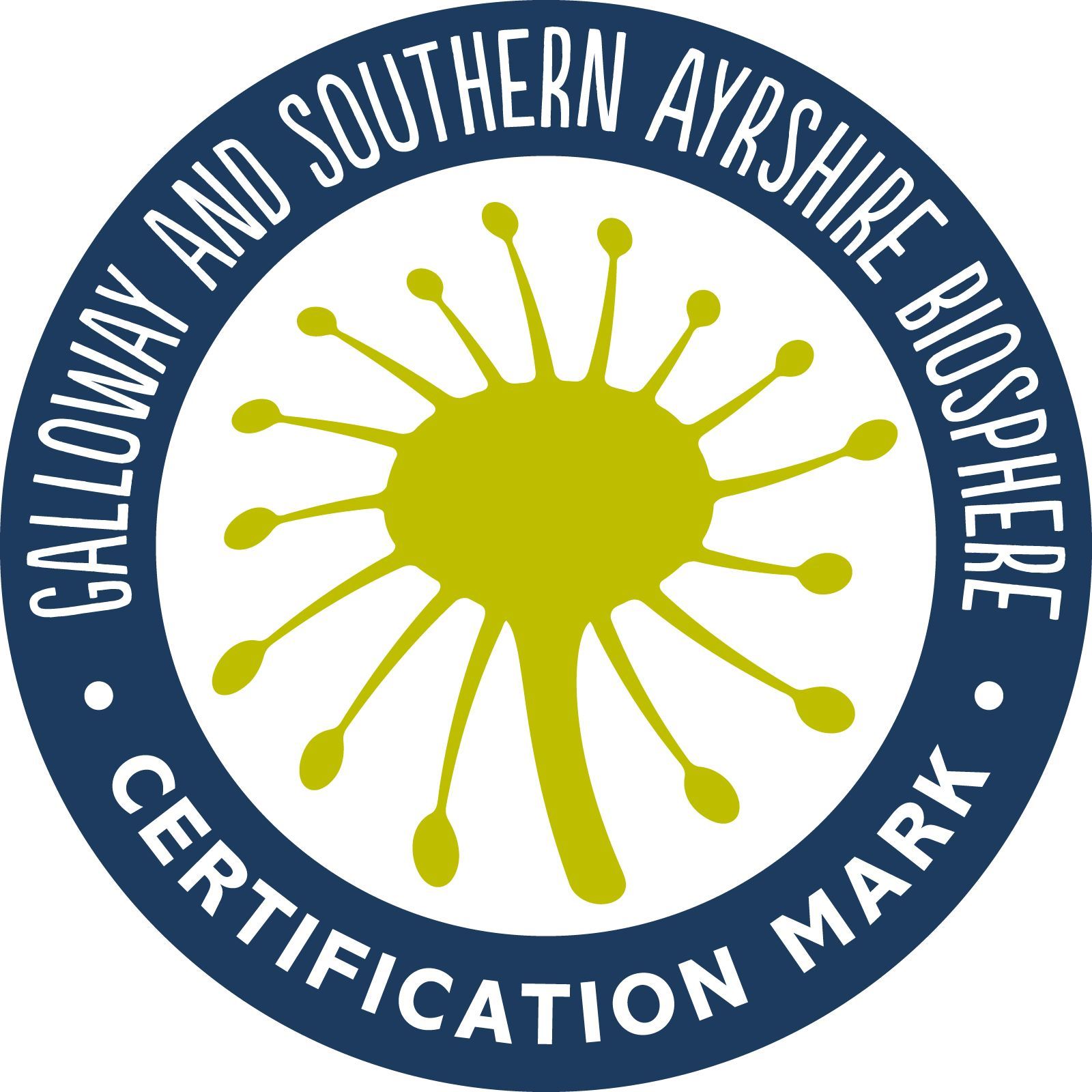
The Galloway & Southern Ayrshire UNESCO Biosphere has been recognised internationally as a
world class environment for people and nature.

Galloway & Southern Ayrshire UNESCO Biosphere covers more than 9,700km² of terrestrial and
marine environments across three local authority areas (Dumfries & Galloway, East and South
Ayrshire).
-
We need a statue, but isn't bronze out of date?
In my opinion, the use of bronze in statues, is very much out of date. It was perfect in Victorian times of heavy industry and Gothic splendour. Concrete and steel was perfect in the modernist period of brutal architecture and science fiction, but today the use of these high polluting and high carbon materials are for many people, seen as irresponsible. I use 100% British legal and sustainable wood click here to see.
-
Does Public Art need planning permission?
In most cases any art in the public realm will require planning permission. However, this is not to be feared, in my experience the planners gernerally, are helpful. If your public art project is proposed for a temporary time period, you may be able to obtain permission by correspondence. My advice is to contact the planners at your local authority, at the earliest stage of your enquiries. There may be planning suggestions and or conditions, that will have a material effect on your proposal and it's as well to know this before you get going too far.
-
Is wood really suitable for Public Art Sculpture?
The planners don't like the use of wood as a material in public art. This is a common problem that I encounter. The context is as far as I can discern, Local Authorities often express the view that for permanent art installations in the outside, the use of wood is unsuitable. They justify this statement by pointing out the future maintenance and repairing liabilities of wood opposed to those of bronze. I would point out that this is an out dated approach for the following compelling reasons but overriding in my view, is that I'm not sure an accountant is the best person to dictate the success or otherwise of contemporary art and culture.
-
How much time does it take to organise?
It can take many months from start to finish, I suggest you allow a year or more.
-
Do you cover the whole UK?
I'm based in Scotland but I serve the whole UK. You will need someone , or a few local volunteers to carry out the installtion. I will provide a step by step guide once your sculpture is finished.
